Overview
Students will experiment with mixing oil pastels to mix secondary colors, tints, and shades using different techniques.
Materials and Tools
- Oil Pastels
- Paper
Objectives
Students will understand that:
- Oil pastels can be mixed, smudged, and layered to create dynamic effects.
- A secondary color is made by mixing two primary colors.
- A tint is made by mixing white with any color.
- A shade is made by mixing black with any color.
Students will be able to:
- Mix, smudge, and layer oil pastels.
- Mix secondary colors.
- Mix tints of colors.
- Mix shades of colors.
Activities
Oil Pastel Tips
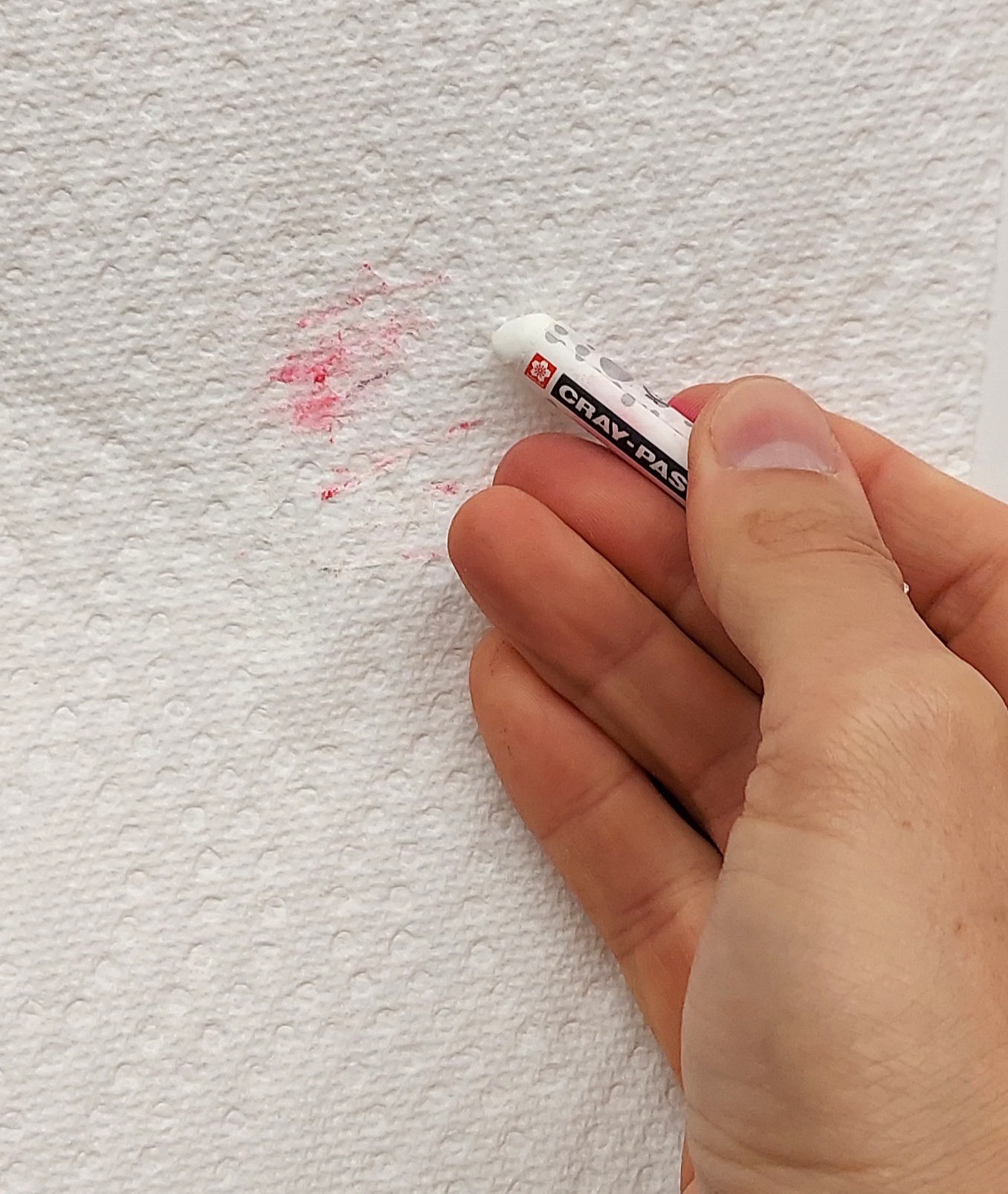
It can be helpful to clean your oil pastels on a separate sheet of paper or paper towel before using it to mix a new color.
It can also be helpful to use specific fingers when smudging. This will keep unwanted colors from mixing on your page.
Engagement/Work Time
Step 1: Draw three 3-5 shapes.
Demonstrate: Fill your page by lightly drawing three overlapping shapes.
Show students how to correct a mistakenly drawn line by smudging it into the paper and drawing over it.
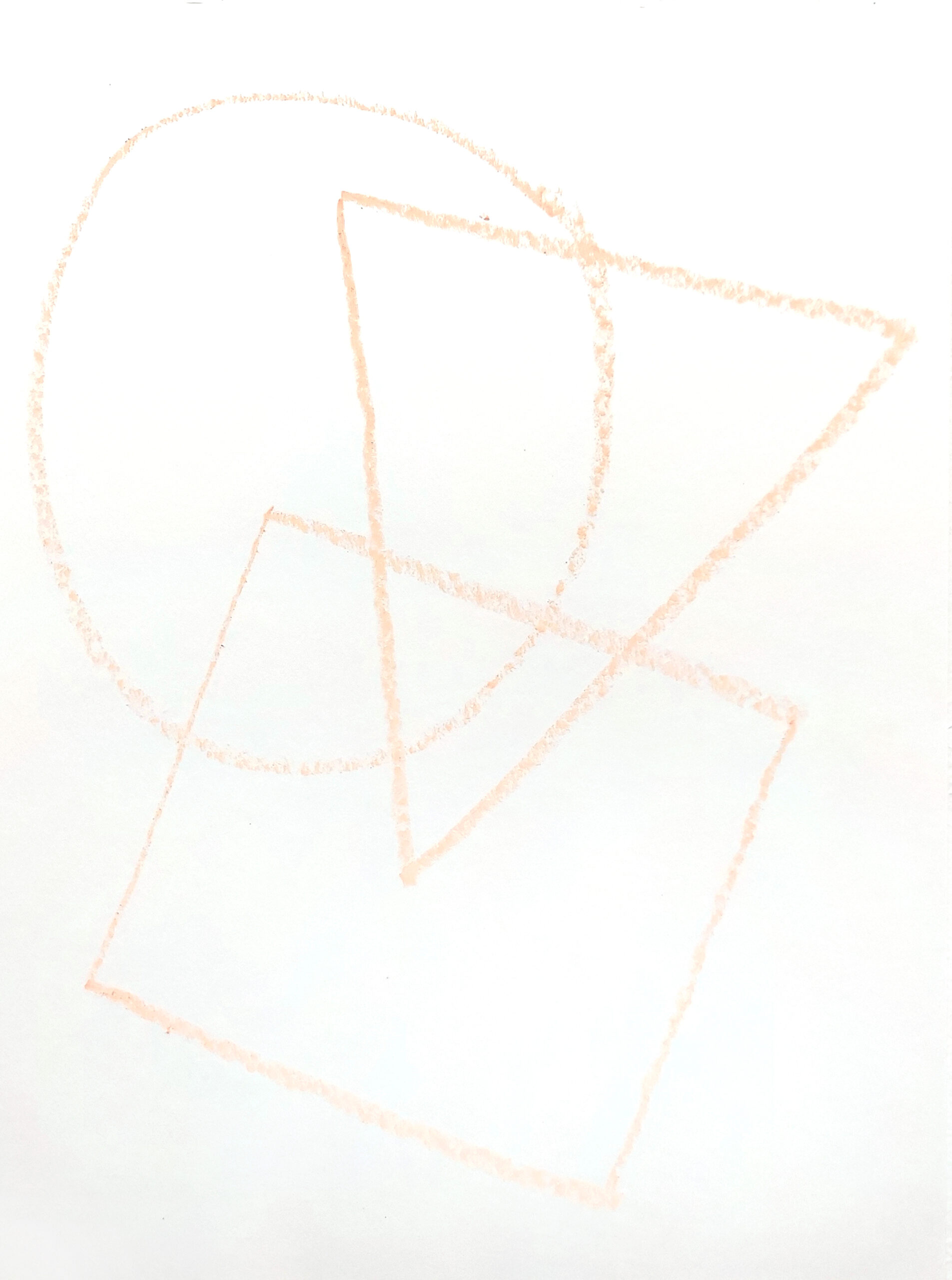
Step 2: Fill one shape with a primary color.
Use a primary color to fill in a section of a shape with varying amounts of pressure.
Ask: How does the color change when you press hard/light?
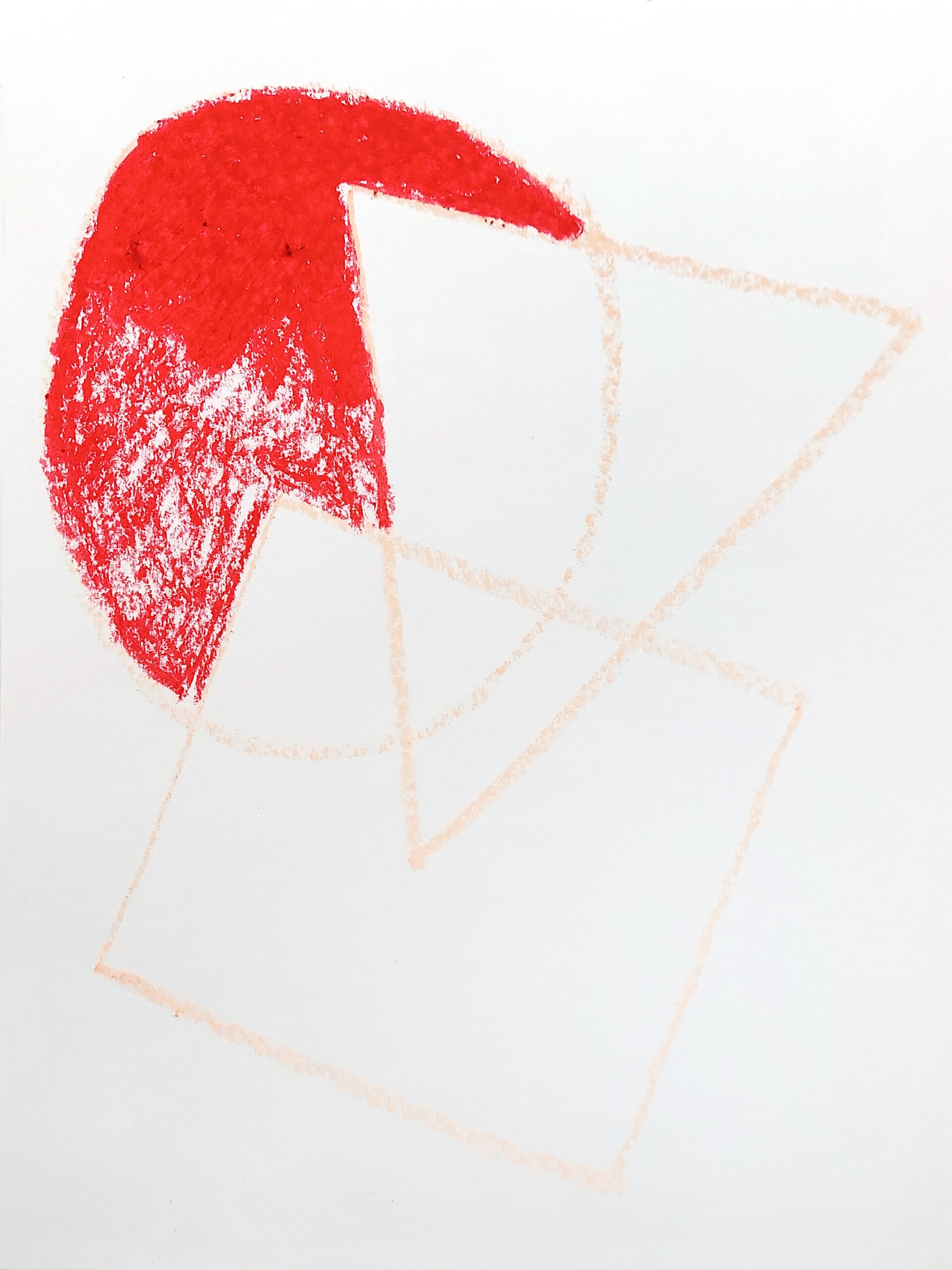
Step 3: Smudge and layer by creating tints and shades.
Mix a few tints and shades. Use a finger to show students the difference between smudging color with your finger vs. layering colors. Add black to a section of your shape to create a shade.
Ask: How does the smudged tint look different from the layered shade?
Step 4: Fill each shape with a primary color.
Fill a few sections of your shapes with primary colors, adding white and black to create tints and shades.
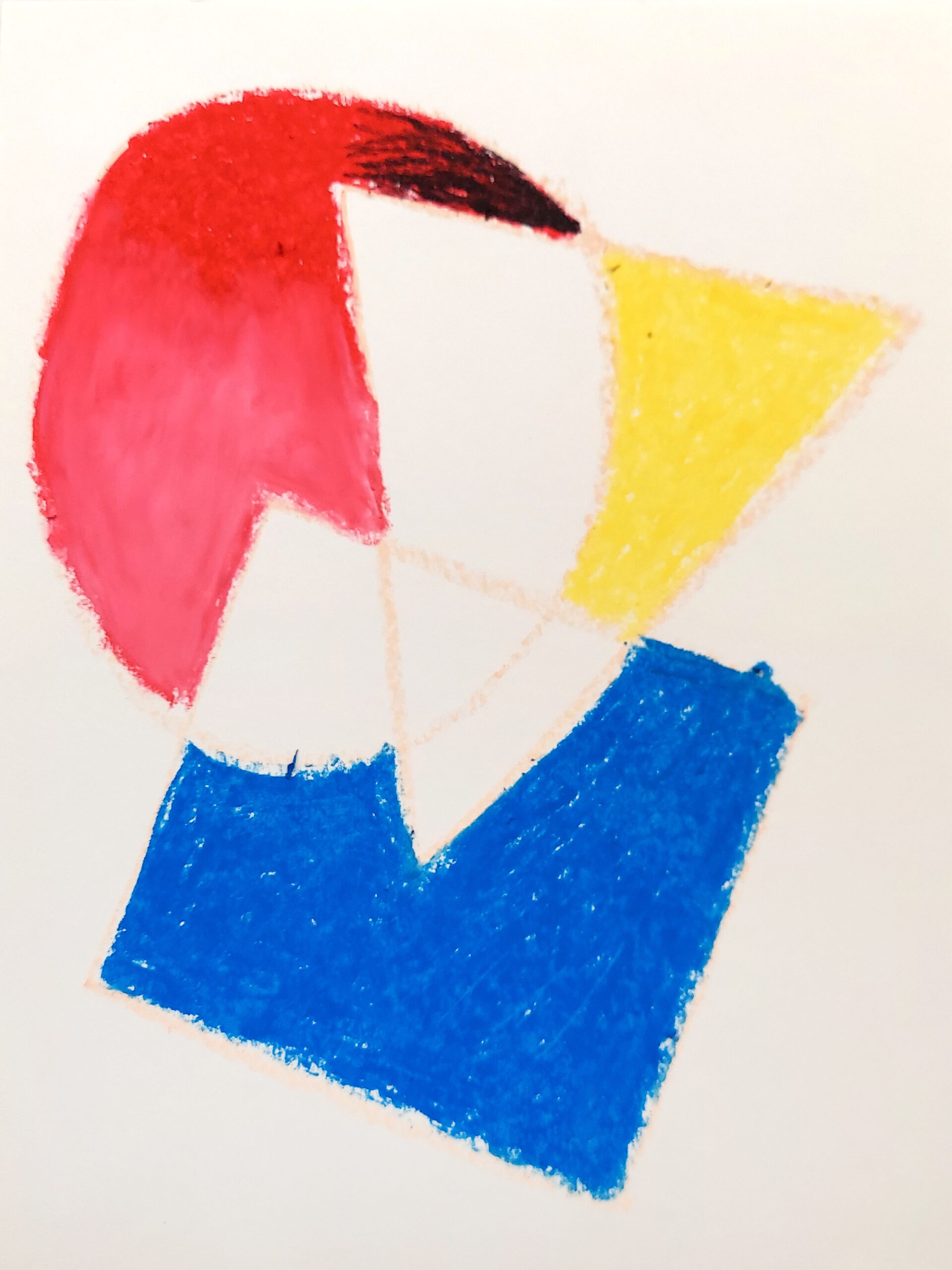
Step 5: Mix secondary colors.
Demonstrate combining secondary colors to make primary colors.
Ask: What color did I make when I mixed red and yellow together? Blue and red? Yellow and blue?
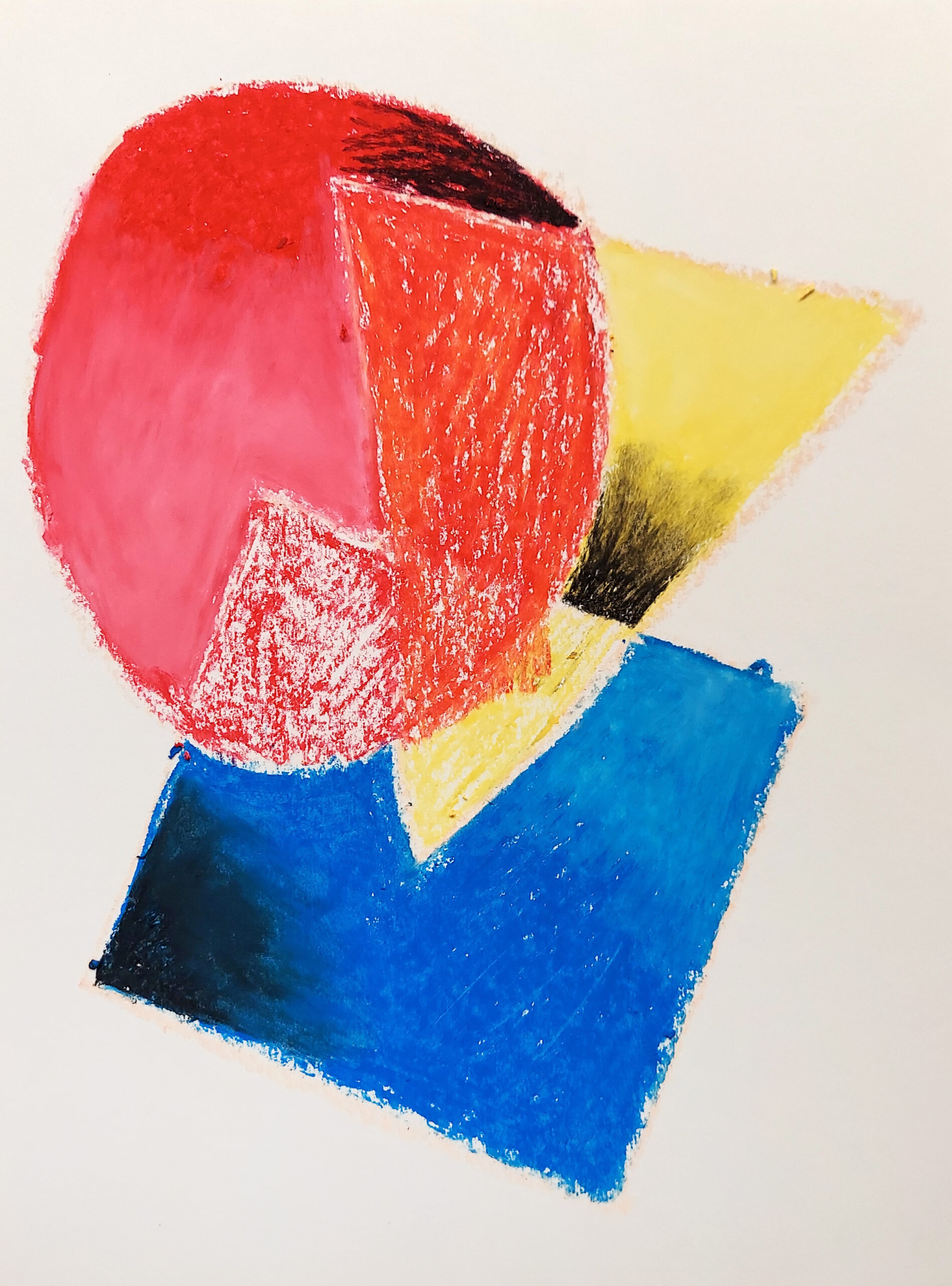
Step 6: Add Layers to mixed colors.
Demonstrate: Show students how to make their mixed colors rich and opaque by adding layers.
Ask: How did the color change by adding more layers of oil pastel?
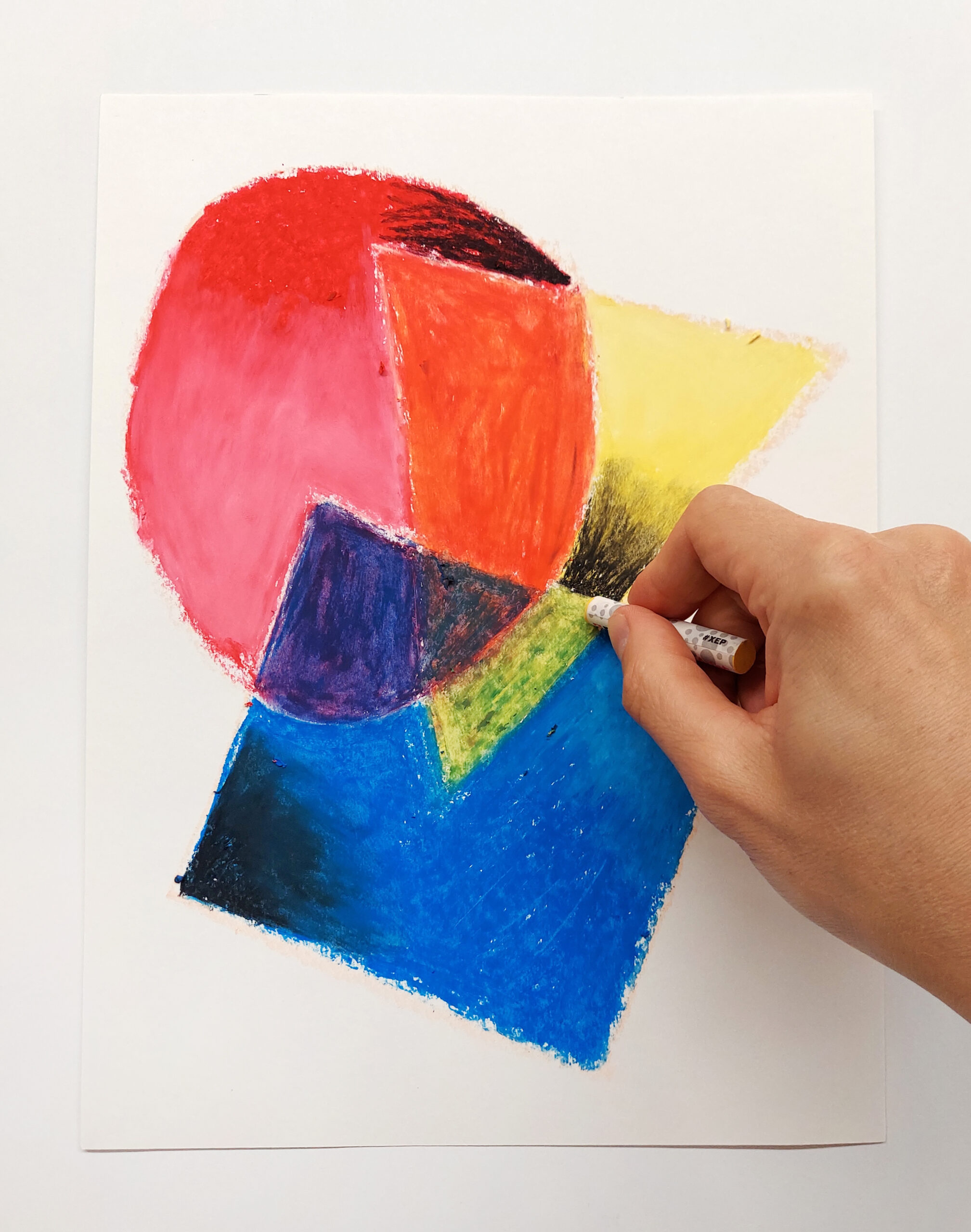
Step 7: Finish your drawing.
Encourage students to finish the rest of their drawing by continuing to mix primary and secondary colors, tints, and shades while smudging and layering oil pastel.
Ask: What’s a new color you created?
What colors did you combine to make it?
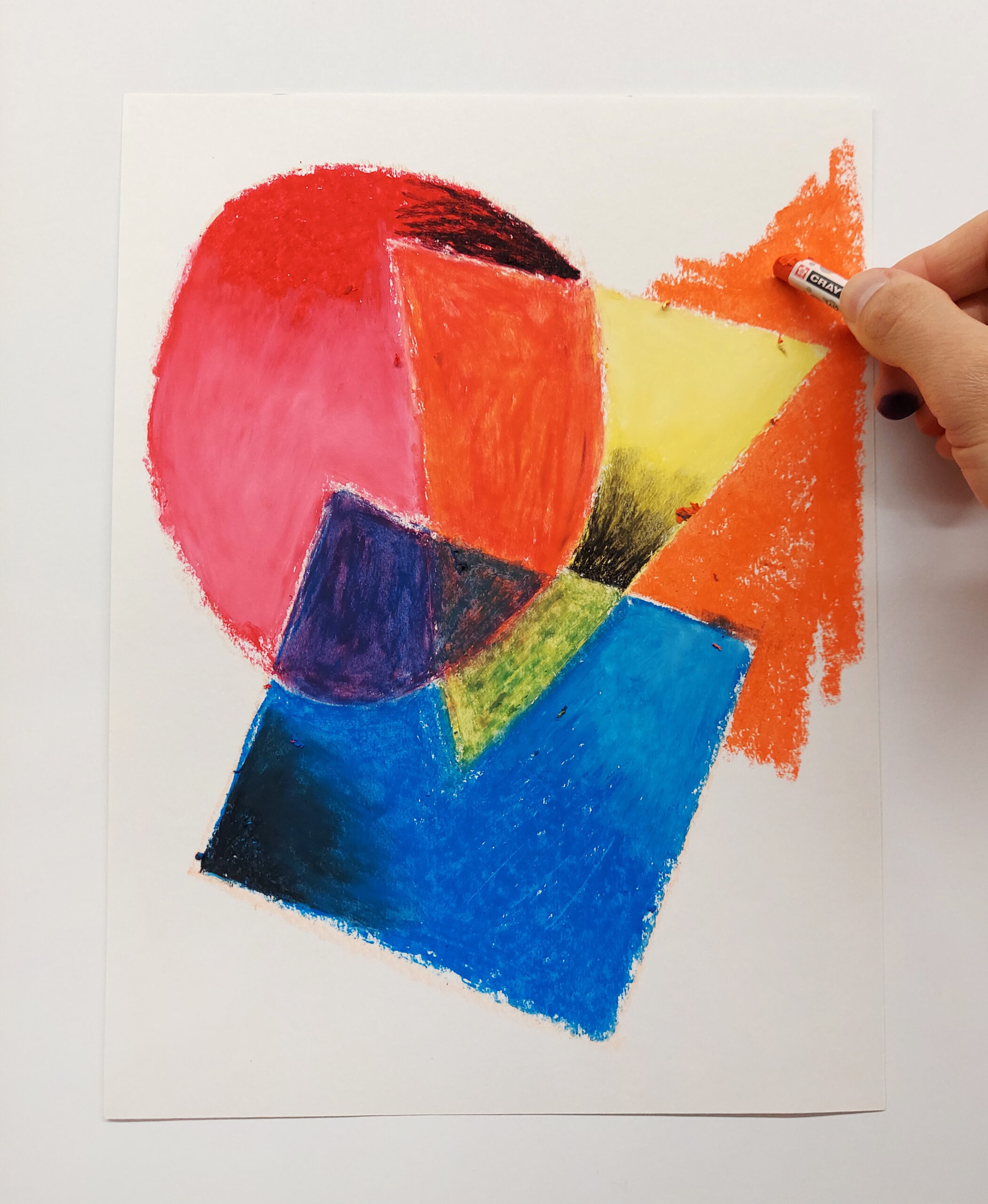
Reflection Questions for Discussion
- What is a new technique you practiced today?
- What is a new color you mixed today?
Vocabulary
Primary Colors: red, yellow and blue. These colors cannot be made from other colors.
Secondary Colors: green, purple and orange. These colors can be made by mixing pairs of the primary colors.
Tint: A tint is any color mixed with white.
Shade: A shade is any color mixed with black.
Mix: Oil Pastels colors can be combined to create new colors.
Smudge: Oil Pastels can be easily smeared and blended using your fingers.
Layer: Oil Pastels can be layered by putting one color directly on top of another.
Resources

